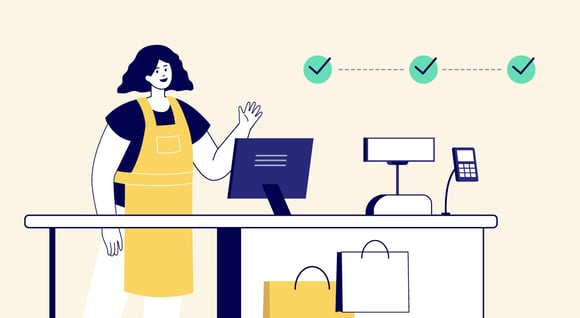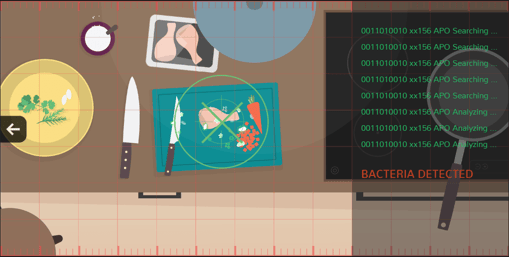What kinds of training does a retail employee need? Well. It's easier to say what a retail employee doesn't need. But that's probably not why you've clicked on this blog post.
Let's go back to the training must-haves for a retail employee. For example, customer service training, retail sales training, and retail safety training. Another question to answer is whether these types of training should be in-store training or online retail training. Maybe both.
The bottom line is that retail staff training is essential for the business to succeed. But also, for the retention of employees.
So, where do you begin, when you want to create retail training programs? We've got your back with these 4 steps to create the best training programs for retail employees.
1. Discover Training Needs
We've already mentioned some of the must-haves when it comes to retail training courses. A quick brush-up: It can be soft skills such as customer service skills or a retail sales course. Or maybe elevating the product knowledge? And we haven't even mentioned onboarding yet.
However, in your business, you might need even more varieties of retail skills training.
In this first step, you can, for example, discover your training needs through observation, feedback from employees, and analysis of performance data. Once you have identified the areas that need improvement, you can develop a training plan to address them.
Also, you should be clear about the objectives for the training. For example, after customer service training, your objective could be to improve customer satisfaction ratings by 10% within 3 months.
2. Find the Best Training Formats
Tick-tock. Time can become an issue when you want your new employees to get up to speed. However, the best way to train your employees might not be dedicating multiple days in the schedule solely to training, but also providing your employees with opportunities to train on the go.
Of course, a lot of the employee training must be done on the floor, while your new employee, for example, takes care of customers. But a lot of the training can also be done online - before they even set foot in the store. This will give them a great baseline to do the job well, and, at the same time, it gives new eager employees just the appreciation they need, when they receive possibilities to train on-demand.
Online training can easily be set up in an LMS (learning management system). Depending on the system, you can easily create your training programs with AI or interactive elements to boost engagement for your employees.
For employees working in retail, it's especially key to create training they want to complete. They don't need another boring click-and-read text module based on a PDF, or piles of training materials for that matter. Think interaction and bite-sized learning and see your employees smile instead of sigh.
See how 7-Eleven trains its employees with retail courses online and interactive games.

3. Ready. Set. Train.
Have you scheduled the training sessions? Then, now, it's time to start, once you've assigned the right instructors, maybe some of the retail managers. Remember that the instructors must be knowledgeable and experienced in the areas being taught.
Also, in some LMSs you can create a clear path for career development, and add the relevant trainers to the courses, learning modules, etc.
While the training is ongoing, remember to check in with the new employees. Make sure they have access to all training materials (potentially in your LMS). Maybe, they are uncertain about how to approach the training and need a helping hand. This is also valuable feedback for the next and final step, where you evaluate and improve your training materials.
4. Evaluate. Improve. Repeat.
Finally, it is critical to evaluate the training program to be sure it's effective. This evaluation can also be done in most LMSs through surveys, quizzes, or feedback from employees. Use this feedback to make adjustments to the training program as needed.
And, of course, evaluation is not something that happens once. This is ongoing. Times change, your employees change, and your business change, as well as your needs.
That's why it's essential to evaluate and improve your training programs constantly. At least if you want to have the best training program for retail employees.


